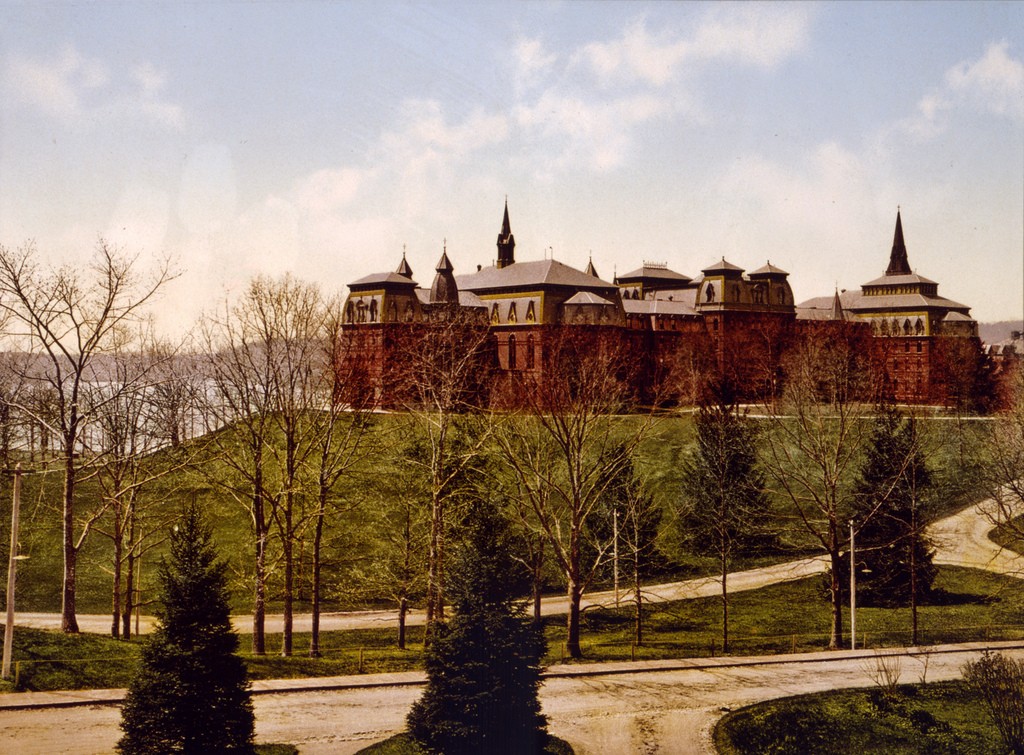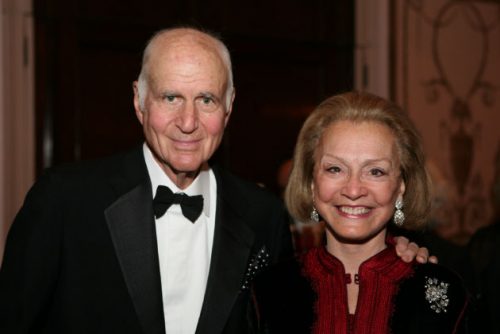The big news in higher education this month has been the closing of Sweet Briar College, the small liberal arts women’s school in rural Virginia. Sweet Briar’s shuttering came as a surprise to many (including alumnae), not least of all because of its relatively healthy $100 million endowment and its solid academic reputation. Since making the announcement last week, college administrators have had to sort through all sorts of lingering questions, such as what will happen to the faculty and students, who will buy the land, and what happens to the sports teams?
Larger questions loom, too. For instance, it remains unclear even now whether or not the college can legally sell the land, given the founding benefactor Indiana Fletcher Williams’s explicit stipulation that “No part of the said Sweet Briar Plantation and the two tracts of land adjoining ... shall at any time be sold or alienated by the corporation [i.e., the college].” Add to this the fact that more than $53 million of the college’s endowment came from permanently restricted funds which may now need to be paid back to donors and Sweet Briar’s planned orderly retreat starts to look more like a mad dash for the door.
News of the closing resonated in part because it was so unexpected, especially in the wake of an early February report that overall university endowments had reached record levels in 2014, with Harvard alone raking in over $1 billion that year. Rather than reassure nervous higher ed. watchers, however, the endowment report tended to feed fears over a growing “bubble”—why on earth would Harvard need an overall endowment of more than $36 billion (larger than many states’ budgets) if not but to feed a swollen model weighed down with runaway costs? (For context, Harvard’s 1910 endowment was about $23 million; an inflation-adjusted 1998 equivalent would have been about $360 million, but by that point the figure had already reached $12.8 billion. The endowment has continued to run away since then.)
But consider the self-understanding and expansive mission of most schools today, whether research university or liberal arts college: schools exist to “nurture the whole person” while simultaneously staying at the “top of the field,” to attract “world class talent” while and serving the many and varied demands of “social justice.” Modern schools are typically expected to do many other things besides teach, including satisfying the emotional and metaphysical needs of students. Such an ambitious agenda is enough to chew up any budget, and suddenly Harvard’s billion-dollar earnings seem less springing ahead than keeping pace, while Sweet Briar’s $100 million by comparison seems like falling behind.
The University of Rochester’s senior VP put it plainly: “$1 billion is not a lot of money.”
And anyways this may be a high-water mark for college endowments, not a sign of an upward trend. Alumni giving—a major driving force behind endowment growth—is down among millennials. The Chronicle of Philanthropy’s Stacy Palmer told NPR recently that, “75 percent of young people said that they would favor giving to another kind of charity over giving to their college.” What’s more, the 2008 financial crisis dealt a blow to most schools’ enrollment figures, forcing many colleges to shift energies to financial aid in order to fill seats. Some schools, like Sweet Briar, couldn’t attract enough students, despite slashing tuition rates for diversity admittances; the school was left with fewer students paying a smaller percentage of the overall price tag. Neither did Sweet Briar adjust its ever-increasing expenses, including an overcrowded roster of administrators, under-attended classes, extensive on-campus facilities, and all sorts of creature comforts.
At a tiny school like that, with an overall alumnae base of just over 20,000, slight fluctuations in the enrollment rates can mean a great deal and wasteful spending can quickly hamstring a tight budget. Several commentators have tried to downplay the Sweet Briar closing as an isolated incident, and it may turn out to be so, but the structural problems that plagued Sweet Briar are not foreign to many small schools across the country.
The Ivies’ multi-billion dollar fundraising campaigns and Sweet Briar’s failure both underline the same basic fact: Colleges are increasingly becoming platforms for almost everything but teaching, and this shift lies behind much of the soaring costs. In the latest sign of this trend, Wesleyan College recently announced a new housing option for its students—an LGBTTQQFAGPBDSM house run through the Office of Residential Life. That formidable acronym stands for “Lesbian, Gay, Bisexual, Transgender, Transsexual, Queer, Questioning, Flexual, Asexual, Genderfuck, Polyamorous, Bondage/Disciple, Dominance/Submission, Sadism/Masochism”—all identities that the college sees fit to invest money in sanctioning. Colleges and universities that continue down this path run the risk of budget-breaking bloat—there’s always a new center or student house or social justice program to fund, and administrators, fundraisers, and even professors tend to get distracted from the core mission of educating students.
Especially at liberal arts colleges, teaching has been displaced by all sorts of ancillary pursuits. And this takeover of college life by politicalized cadres is tied to teachers’ unwillingness to teach, as described wonderfully by Jacques Berlinerblau in a recent essay for the Chronicle of Higher Education. Berlinerblau explains:
While teaching undergraduates is, normally, a large part of a professor’s job, success in our field is correlated with a professor’s ability to avoid teaching undergraduates. It follows from this contradiction that the more accomplished the scholar, the less she or he is required to engage with students. Prestigious institutions perpetuate this logic by freeing their most distinguished faculty members from classroom responsibilities.
The result, according to Berlinerblau, is a deracinated and out of touch academic establishment that caters more to students’ demands than it does form them in the accumulated wisdom of the ages. This deracinated model has caused a crisis of coherence, not to mention profitability, according to Berlinerblau, and he suggests that the only way forward for professors of the humanities is to “teach or perish.” He means by this a more humble, less accessorized style of college administration that focuses, reasonably, on student-professor interaction.
There are all sorts of reasons why Sweet Briar closed its doors, and I do not wish to oversimplify the picture. And to be sure, with an 11:1 student/faculty ratio, Sweet Briar was a teaching college. But at the same time it was also weighed down by the never-ending demands of a modern liberal arts college, including a therapeutic-recreational model that only the likes of Harvard and Stanford can afford (and them for only so long). When colleges and universities build up non-academic programs at the expense of their core mission, which is to mold (and not be molded by) their students, no endowment in the world will be enough the feed that beast. And students are unlikely to turn around and give generously to institutions that they remember as little more than a four-year playground.
If a rash of closings does hit higher ed., it will have two main victim groups: those small colleges with modest endowments nevertheless trying to keep up with the demands of a politicized student-services regime, and those lumbering, middling universities that have spread themselves too thin and turned their back on teaching.






